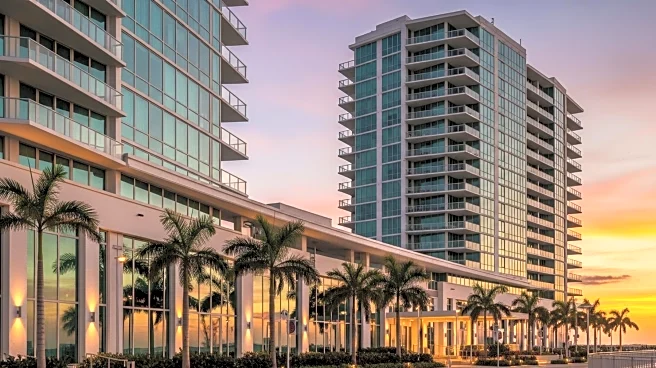What's Happening?
Miami-Dade County experienced a significant increase in $1M and up condominium sales in August 2025, with a 10.8% year-over-year rise from 120 to 133 units sold. This surge is attributed to the demand for affordable 30-year condo units, which continue to hold value despite elevated mortgage rates and limited inventory. The MIAMI Association of Realtors reports that older condos, priced at a median of $280,000, offer affordability and opportunity for first-time homebuyers. New state regulations requiring inspections and adequate reserves for older buildings are expected to strengthen Miami's condo market, making previously non-financeable buildings financeable. Additionally, Miami's $5M and up transactions rose by 11.8%, reflecting ongoing wealth migration to South Florida.
Why It's Important?
The increase in high-value condo sales in Miami-Dade County highlights the region's appeal to affluent buyers and the impact of new regulations on the real estate market. The demand for older, affordable condos provides entry points for first-time buyers, contributing to the area's economic growth. The regulations ensure the resilience of Miami's condo inventory, potentially increasing buyer confidence and market stability. The trend of wealth migration to South Florida underscores the region's attractiveness as a luxury real estate destination, which could lead to further economic development and investment opportunities.
What's Next?
With the Federal Reserve's recent rate cut, mortgage rates are expected to decline further, potentially boosting the Miami real estate market. As rates approach 6% by year-end, buyer momentum and confidence are likely to increase, leading to more pending sales and price growth. The ongoing wealth migration and new state regulations may continue to drive demand for high-value properties, while the affordable housing initiatives under Florida's Live Local Act could expand the market for lower-priced units.
Beyond the Headlines
The new state condo regulations not only enhance the financial viability of older buildings but also raise ethical considerations regarding housing affordability and urban development. As Miami's real estate market evolves, the balance between luxury and affordable housing will be crucial in addressing the needs of diverse socioeconomic groups. The regulations may also set a precedent for other regions facing similar challenges in maintaining resilient and financeable housing inventories.












